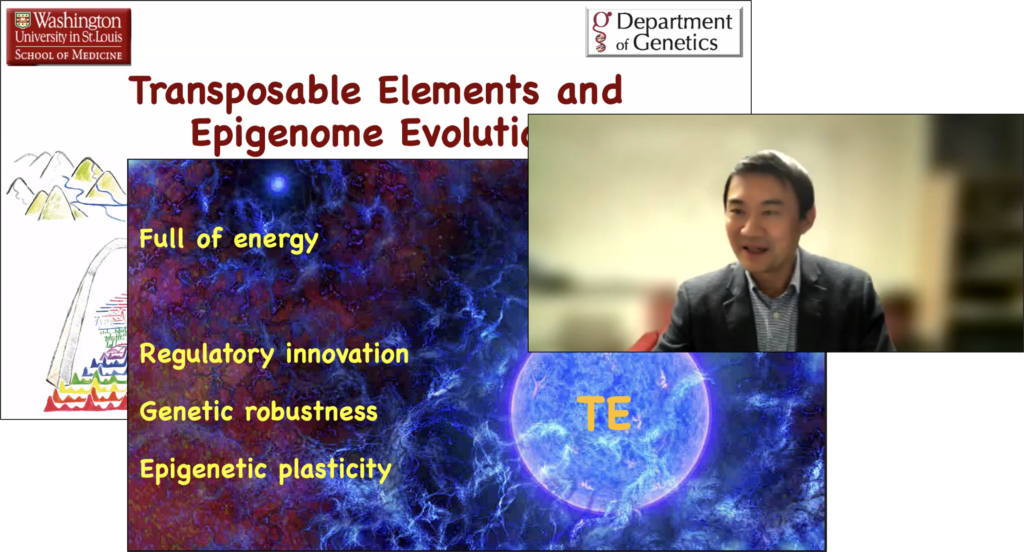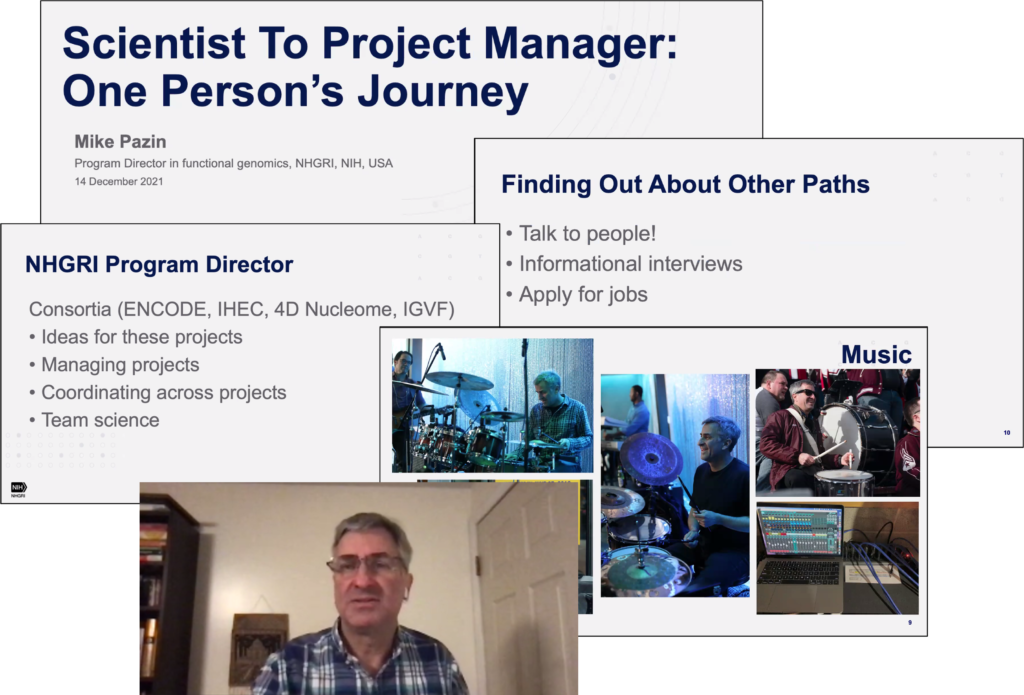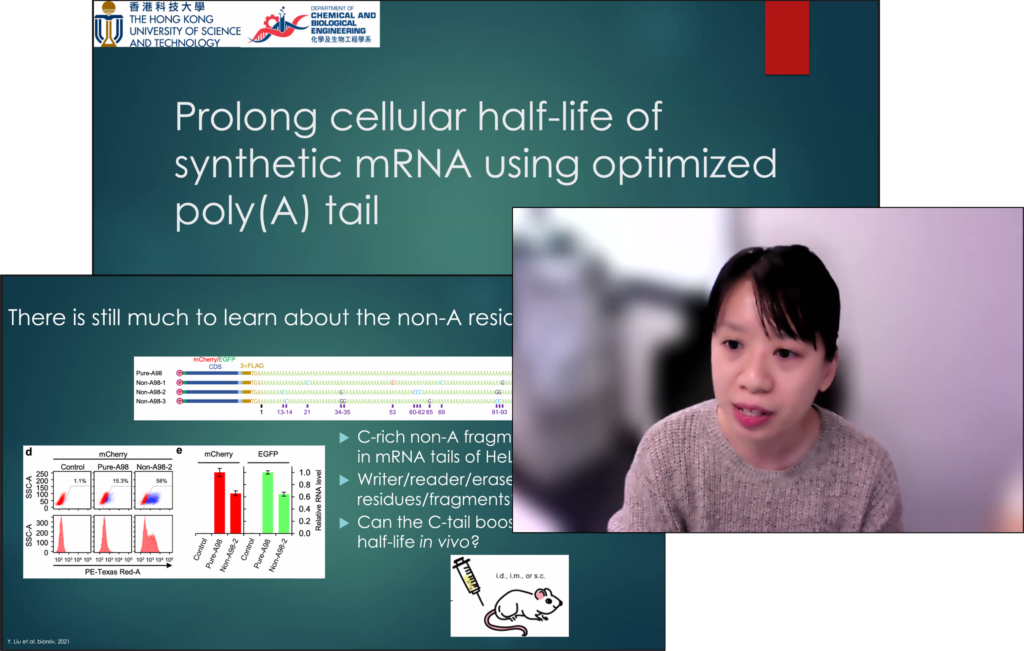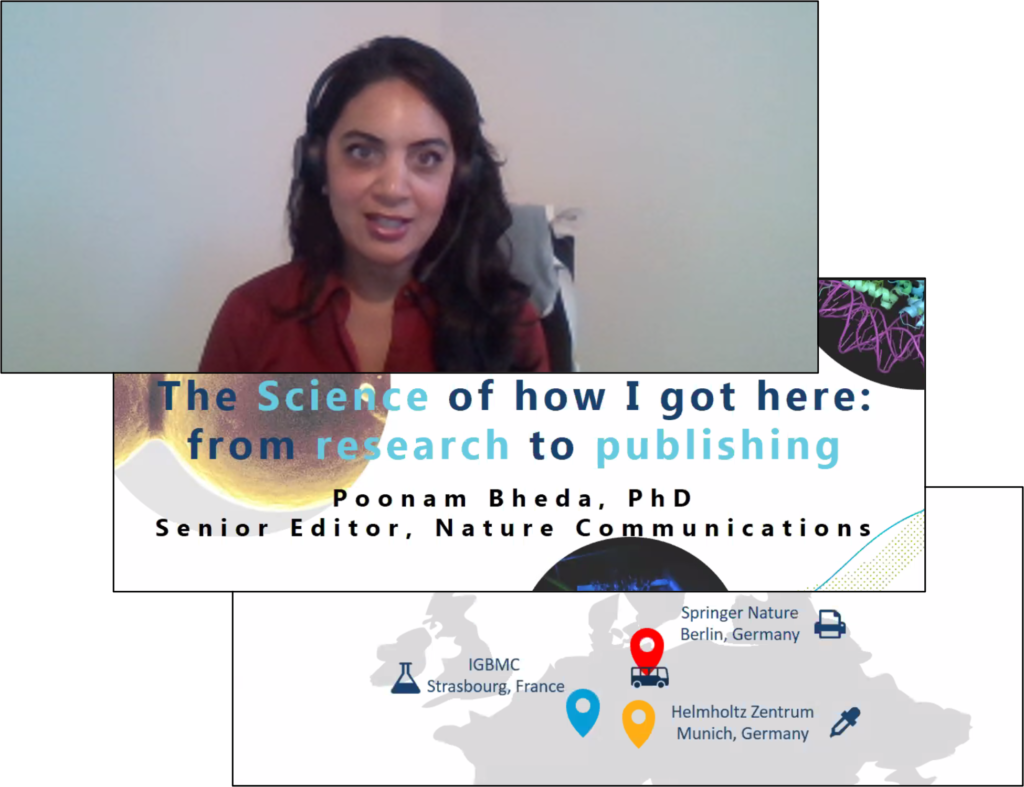epihk-2021-winter-highlights
Highlights:
EpiHK 2021 Winter
Virtual Symposium
December 14, 9:00am-1:30pm
December 15, 1:30pm-5:30pm
via Zoom

Supported by
The Lo Ka Chung Charitable Foundation


The EpiHK 2021 Winter Virtual Conference was held via Zoom on the morning of December 14th and during the afternoon of December 15th. An eclectic group of distinguished speakers from both domestic and international institutions presented at our symposium, enlightening the EpiHK community with both traditional science talks and non-traditional career information. Not to mention, many talented trainees from EpiHK labs honored us with their presentations. It was truly a fulfilling event!

In his keynote presentation “Transposable Elements and Epigenome Evolution“, Prof. Ting Wang from Washington University in St. Louis spoke about the complex roles that transposable elements have in genome conservation, regulatory alteration, and both disease development and therapeutics, interspersing compelling science with light-hearted humor. Please vote for Barbara McClintock on the U.S. twenty!
Jacqueline Aw from Prof. Danny Leung’s lab at The Hong Kong University of Science and Technology followed with “DNA repair inhibition induces release of repetitive sequences in the cytoplasm”, in which she dazzled the audience with her knowledge on the effects of ATM pathway inhibition on cytoDNA levels.
Dr. Mike Pazin, a NHGRI program director, graciously shared with us about his eye-opening, non-traditional career path in his talk, “From scientist to funding agency project manager; one person’s journey“.


Prof. Melissa Fullwood from The National University of Singapore presented “Investigating looping super-silencers in the human genome”, sharing fascinating data about the potential of H3K27me3-rich regions (MRRs) functioning as super silencers and its role in chromatin interactions.
In “CRISPR-assisted detection of RNA–protein interactions in living cells (CARPID)”, Wenkai Yi from Prof. Jian Yan’s lab at City University of Hong Kong shared with us the details of an impressive new method.
Prof. Louis Lefebvre from The University of British Columbia presented a thought-provoking model implicating LTRs in the evolution of imprinting sites with “Origin and function of oocyte DNA methylation”.
Quanhua Mu from Prof. Jiguang Wang’s lab at The Hong Kong University of Science and Technology gave a masterful presentation with “MYC amplification at diagnosis drives therapy-induced hypermutation in recurrent glioma”.


In her first talk at an EpiHK symposium as an official member, Prof. Becki Yi Kuang from The Hong Kong University of Science and Technology concluded the first day by captivating us with her talk “Prolong cellular half-life of synthetic mRNA using optimized poly(A) tail”, in which she talked about the consequences of different nucleotides in mRNA poly(A) tails and their therapeutic value.
Prof. Alfred Cheng from The Chinese University of Hong Kong started off the second day of the symposium with “Enhancer reprogramming for cancer immunotherapy”, an absorbing presentation supporting the synergistic use of epigenetic drugs to maximize the effects of immune checkpoint blockade (ICB) therapy in hepatocellular carcinoma (HCC) patients.
Esther Wan from Prof. Kui Ming Chan’s lab at City University of Hong Kong “Oncohistone: H2BG53D in Pancreatic Ductal Adenocarcinoma” demonstrated that H2B with a mono-allelic missense mutation in PDAC patients can result in weakened chromatin interactions and alterations in gene expression.

Lei Yu from Prof. Angela Wu’s lab at The Hong Kong University of Science and Technology briefed us on an exciting new and useful technique in “scONE-seq: A single-cell multi-omics method enables simultaneous dissection of molecular phenotype and genotype heterogeneity from tumors”.

In “Molecular and functional features of synucleinopathy-associated astrocytes”, Prof. Owen Ko from The Chinese University of Hong Kong gave an intriguing presentation characterizing synucleinopathy-associated astrocytes (SAA) and revealing some scintillating data which hinted at the possible importance of glutamate.
In “The science of how I got here: from research to publishing”, Dr. Poonam Bheda, a senior editor at Nature Communications, helpfully informed the EpiHK community about her diverse and unique experiences leading to her employment at a major science journal.
Qiang Sun from Prof. Huating Wang’s lab at The Chinese University of Hong Kong engaged us with “Elucidating the novel regulatory function of RNA binding proteins in 3D genome organization”, in which he questioned how RBPs are involved in chromatin conformation and to what extent.


We finished our symposium with our second keynote speaker, Prof. Gonçalo Castelo-Branco from Karolinska Institutet with “Single-cell Epigenomics of Oligodendroglia during Neural Development and in Multiple Sclerosis”. He regaled the audience with his various projects which utilized multiple single-cell techniques in oligodendrocytes and in MS and spanned from investigating oligodendrogenesis to exploring the effects of Interferon gamma in MS OPCs to introducing spatial CUT&Tag.
To conclude, we would like to thank all the speakers and attendees for turning our first virtual EpiHK conference into a great event. We hope everyone will join us for the next symposium where we will showcase more exciting ideas and research in the ever-expanding field of epigenomics.
Live long and prosper. Thank you!
